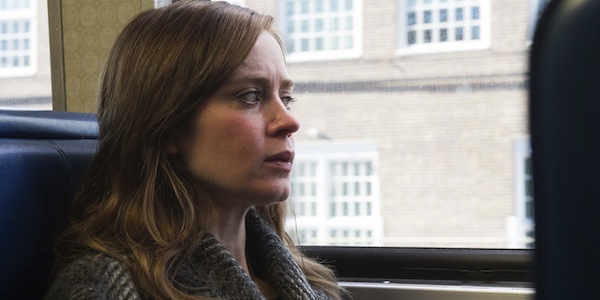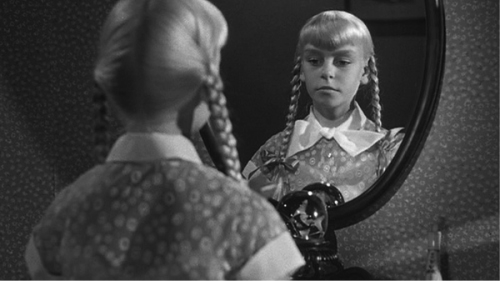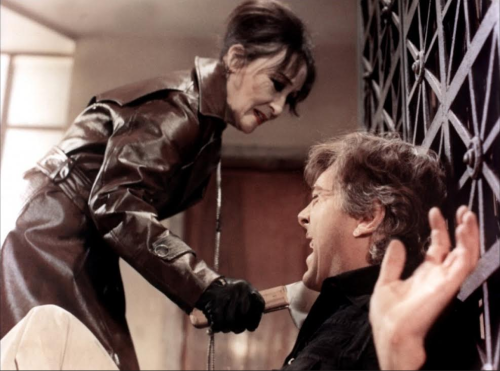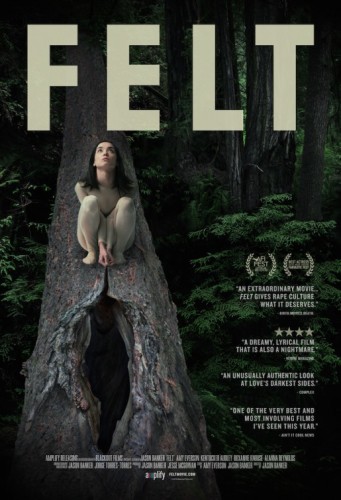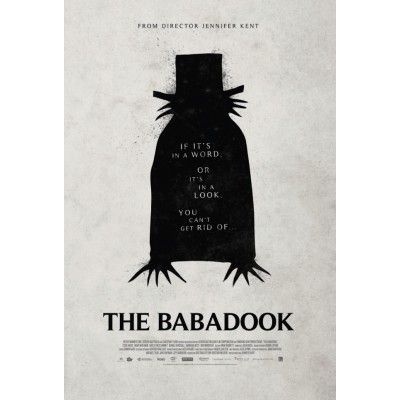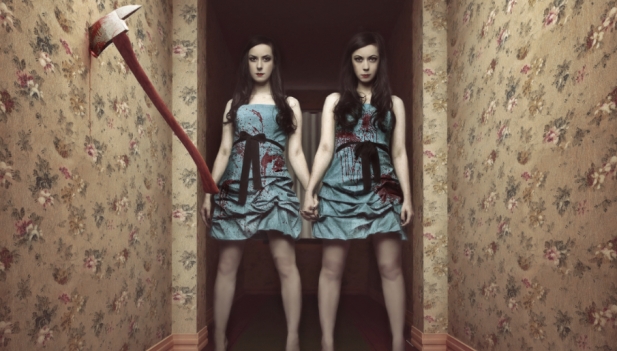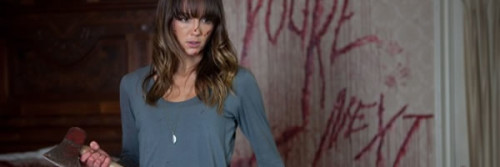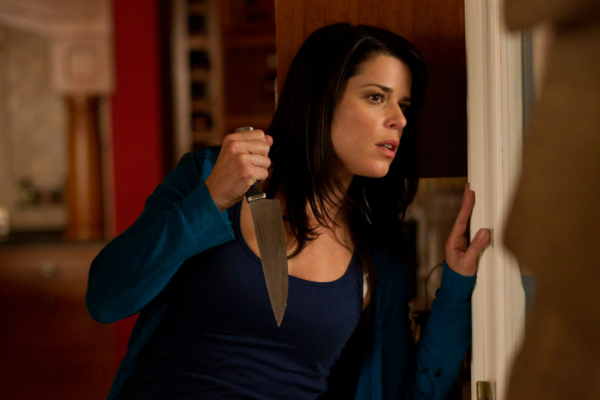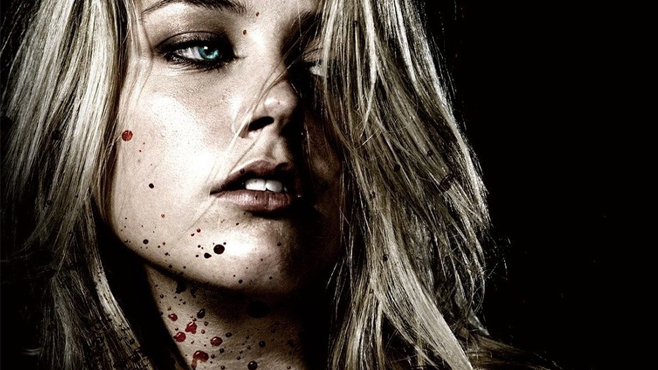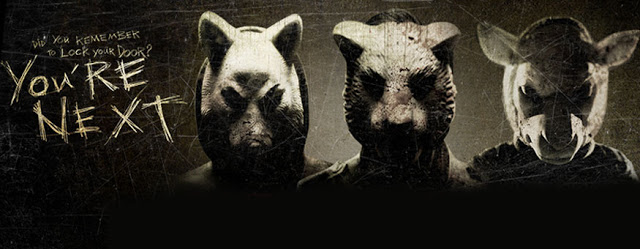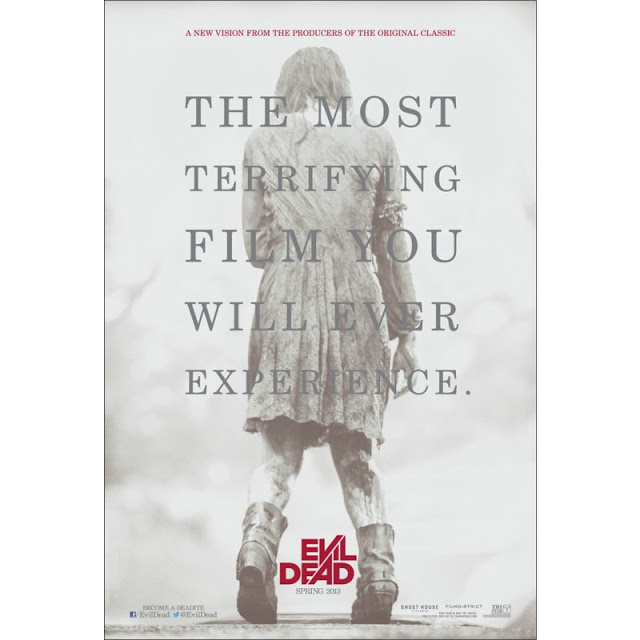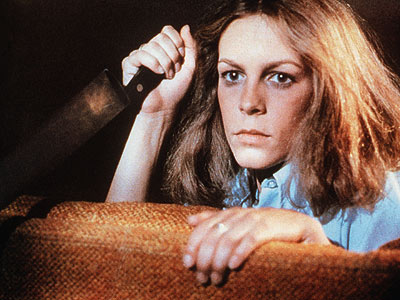Written by Sarah Smyth.
Earlier this week, the trailer for the adaptation of Paula Hawkins’ best-selling psychological thriller, The Girl on the Train, was released, and the internet went into a melt-down. The film tells the story of Rachel (played by Emily Blunt), a divorcee and heavy drinker, who becomes obsessed with watching a seemingly idyllic couple on her commute to work. When the woman in the couple goes missing, Rachel finds herself dangerously implicated in the investigation. The film obviously parallels David Fincher’s 2014 film, Gone Girl. They are both psychological thrillers adapted from best-selling novels featuring untrustworthy and morally ambiguous leading female characters. They also both refer to their leading lady as the “girl” in the film. It is precisely this that I want to problematize in this piece: why are these female characters specifically referred to as girls when they are clearly women?
After all, both Emily Blunt and Rosamund Pike (who plays Amy, the lead female character in Gone Girl) will be/were 36 years old when their respective films will be/were released. The use of the “girl” in the titles, I argue, continues to position women in a position of vulnerability and weakness in two overlapping ways. Firstly, through “the girl” as a trope within both psychological thriller literature and film, I identify this figuration of girlhood within Carol Clover’s construction of the Final Girl. This figuration, as I will demonstrate, refuses women an autonomous subjectivity, instead constructing them through male fantasies and anxieties surrounding female sexuality. Secondly, by identifying “girliness” and girlhood as a key post-feminist sensibility, the identification of these characters as girls rather than women reinforces an infantilization of women.
Let’s start with the novels. Within the last two year, dozens of popular, mainstream psychological-thrillers have been released featuring “girl” in the title. These include: Girl on a Train (A. J. Waines 2015), The Girl with No Past (Kathryn Croft, 2015, who followed this up with The Girl You Lost, 2016), The Girl in the Ice (Robert Bryndza, 2016), Luckiest Girl Alive (Jessica Knoll, 2016), Little Girl Gone (Alexandra Burt, 2015), Pretty Girls (Karin Slaughter, 2016), The Hanging Girl (Jussi Adler-Olsen, 2016), The Girl in the Red Coat (Kate Hamer, 2015), Dead Girl Walking (Chris Brookmyre, 2015), and Lost Girls (Kate Ellison, 2015). Admittedly, some of the girls of the titles are babies or children, such as Little Girl Gone. Yet, the title of this novel recalls Gone Girl so obviously and even includes references to this novel and The Girl on the Train in it’s marketing on Amazon. In addition, although the “girl” may refer to her daughter, the novel centres around the mother, Beth, who begins ‘an extraordinary and terrifying journey’ after her daughter goes missing. Grown women’s vulnerability and endangerment is clearly the focus here.
This recent trend became visible through Stieg Larsson’s series of novels. Although collectively known as the Millennium series, within the English-speaking world, they are more widely known through the hook of the “the girl” within the title: The Girl with the Dragon Tattoo, The Girl who Played with Fire and The Girl who Kicked the Hornet’s Nest. At 23 years old, the girl of these novels is younger than her Gone Girl and The Girl on the Train counterparts (although Noomi Rapace was 30 when she filmed the Swedish adaptations of the books). Indeed, the novels and films explore Lizbeth Salander’s precarious position between childhood and adulthood, between girlhood and womanhood. Although extremely independent and resourceful, Salander is continually threatened with institutionalisation. When Mikael Blomkvist, a journalist she’s working with, asks her, “How come a 23 year old can be a ward of the state?”, she answers, “I’m mentally incompetent and can’t manage daily life.” Interestingly, the original Swedish title didn’t depend so much on this hook. Although title of the second book remains the same, the first book is called Män som hatar kvinnor (translated as Men Who Hate Women), and the third is called Luftslottet som sprängdes, translating roughly as The Castle in the Sky that was Blasted Apart. The change almost certainly acts as a marketing tool, creating a more easily recognizable brand within, clearly, a crowded marketplace. This book blog also suggests that the English translation attempts to create a thriller with a female character similar to James Bond for potential female readers. While almost certainly true, I ask, would a Bond book or film ever be called, The Boy with the Expensive Watch?
The emphasis on girls rather than women in these novels and the cinematic adaptations continue to reinforce the position of women (as opposed to men) as vulnerable. This, in itself, is not so much the problem. If anything, it is accurate given that women are more likely to experience rape, sexual assault and domestic violence at the hands of men than vice versa. The problem, I argue, is through the fantasies and anxieties that these images of (or identification of these images as) “girlhood” enact. I, here, use the trope of the Final Girl, first identified by Carol Clover’s authoritative and brilliantly titled book, Men, Women and Chainsaws: Gender in Modern Horror Films, to highlight the way in which this is constructed. Here, she explicitly addresses the trope of the Final Girl in slasher films, although her arguments correspond across genres. The Final Girl, she claims, is the film’s lead character, who, as both the victim but also the only survivor in the film, serves as both the site of the audience’s sadistic fantasies, and the anchor for the spectator’s identification. Primarily aimed at young heterosexual men, the Final Girl must be “masculine” enough so that this (assumed) spectator can identify with her; she is often androgynous or tomboyish in appearance and sometimes in name. More crucially, she must be sexualized but never sexual; she must provide the fleshy site for the heterosexual male’s voyeuristic fantasies but she must never have autonomy over her own body and sexuality.
My interest in the Final Girl, here, is less in the literal mappings of the trope within these psychological thrillers. Rather, I am interested in the way in which, for Clover, girlhood denotes a kind of vulnerability and lack of autonomy within cinema. This vulnerability through precisely her identification as a girl rather than woman positions this figure only through the sexualization which the audience allow her; namely as a bodily site of (male) sadistic fantasies, and as a space to contain and control women’s sexuality. Whether, these psychological thrillers are aimed at or primarily watched by men or women is almost beside the point (although it’s interesting to note that Gone Girl was called the second-worst date movie of all time after Fatal Attraction due to the polarizing and highly essentialist gender reactions the film is apparently likely to enlist). The construction of the image is so insidious, it seeps into films where women are also an intended audience. I am wary, therefore, of the representations of the women in The Girl on The Train and Gone Girl precisely because of this identification with them as “girls.” After all, as much as we can enjoy and celebrate Amy’s “cool girl” speech in Gone Girl (another image of “girlhood” constructed by men), she ultimately becomes a man’s worst nightmare: a “bat-shit crazy psychopath” who falsely accuses men of sexual assault and rape before either murdering them or trapping them into marriage. Progressive.
Like the psychological-thrillers I mentioned earlier, there are plenty of examples of films with “girl” in the title. Some like Steig Larsson’s novels, do so as an indication of the film’s investigation into a woman’s transition from childhood to adulthood. Some examples include Girl, Interrupted (1999), Mean Girls (2004), and The Diary of a Teenage Girl (2015). This was used most interestingly and (accidently) provocatively in Celine Sciamma’s 2014 film, Girlhood. The original French title, Bande de Filles translates as Gang of Girls. The English title recalls Richard Linklater’s Boyhood, a film released in the same year. But while Linklater’s film about white boy growing up in suburban Texas is considered epic and universal, Sciamma’s film about a group of black groups growing up in inner-city Paris received no such accolades. Granted Boyhood boasts an impressive technical achievement, having being filmed over a 12 years. Yet, the distinction nevertheless points to the continual idea that white men’s stories are universal while women’s stories, particularly women of color’s stories, are niche and singular. Inciting girlhood as a title, however, still comes with its own universalizing problems. Lena Dunham’s HBO-produced show, Girls, explores the transition from girlhood to womanhood in often hilarious and sometimes frustrating ways. However, the “girl” of this title has been criticised for its seeming universality. Although recent Pulitzer prize-winning television critic, Emily Nussbaum argues that this show is “for us, by us,” Kendra James pointed out that this “us” is overwhelming white and wealthy.
However, there are plenty of examples of films were the leading character is a woman who is, nevertheless, referred to as a girl: His Girl Friday (1940), Funny Girl (1968), The Good Girl (2002), Factory Girl (2006), Lars and the Real Girl (2007), The Other Boleyn Girl (2008), and, most recently, The Danish Girl (2015). By contrast, films with the word “boy” either fall into my former category of films concerning the transition from childhood to adulthood (Nowhere Boy (2009), Boyz N The Hood (1991)), or refer to an actual child (The Boy in the Striped Pyjamas (2008), About a Boy (2002)). The disparity between the use of “girl” and the use of “boy” in film titles is, I argue, indicative of women’s infantilization in a wider post-feminist culture. I want now to point to one particular film, Working Girl (1988), as indicative of this problem.
Working Girl tells the story of Tess (Melanie Griffith), a secretary who goes to work in a Wall Street investment bank. After her boss, Katherine (Sigourney Weaver) breaks her leg, Tess uses her absence to put forward a merger deal. As you can imagine, mishaps ensue, but the film ends relatively positively with Tess offered her “dream job,” an office and a secretary. Nevertheless, the film articulates some of the problems, concerns and anxieties of women entering the workplace in the 1980s. Firstly, they still need a female scapegoat in the form of Katherine who becomes the real “evil” figure Tess must fight rather than the institutional sexism of corporate capitalism itself. Secondly, and crucially for my argument, by calling Tess a working girl, the film positions her “threat” to the masculine domain of work as somehow less than if she was a working woman. Indeed, it even recalls the 1986 Working Girls, a film based around prostitution: according to the overwhelmingly male-dominated film executives, is this it for women’s work? Again, I ask my question, if this film revolved around Harrison Ford entering the workplace, would it be called Working Boy?
I locate this obsession with girlhood within post-feminism. There is much debate as to what precisely post-feminism is. However, it is generally understood as a sensibility or aesthetic most generally visible in the late 1980s to early 2000s, after the second-wave women’s movement. Rosalind Gill argues that post-feminism is a distinctive sensibility made up of a number of themes: ‘the notion that femininity is a bodily property; the shift from objectification to subjectification; an emphasis upon self surveillance, monitoring and self-discipline; a focus on individualism, choice and empowerment; the dominance of a makeover paradigm; and a resurgence of ideas about natural sexual difference.’ Crucially, Suzanne Ferriss and Mallory Young argue in their book, Chick Flicks: Contemporary Women at the Movies, post-feminist chick culture involves a “return” to girliness:
“Chick flicks illustrate, reflect, and present all the cultural characteristics associated with the chick flick postfeminist aesthetic: a return to femininity, the primacy of romantic attachments, girlpower, a focus on female pleasure and pleasures, and the value of consumer culture and girlie goods, including designer clothes, expensive and impractical footwear, and trendy accessories.”
One of the first key texts to articulate this is Helen Gurley Brown’s 1962 book, Sex and the Single Girl (note the title), which was turned into a film in 1964. Gurley Brown advocated for women’s sexual and financial independence. Women, she said, should shun marriage in favor of a career. This sexy, single life, however, must be complimented with a trim figure and fashionable wardrobe in order to remain successful and desirable. It should come as no surprise that Gurley Brown acted as editor-in-chief at Cosmopolitan magazine for 32 years, and her book went on to inspire one of the most thoroughly post-feminist texts of the late twentieth century, Sex and the City.
However, I do not wish to simply dismiss post-feminism as a backlash against second-wave feminism or a return to pre-feminist concerns. After all, post-feminism remained concerned with many of the problems feminism attempted to tackle in the 1960s and 1970s such as women in the workplace, financial independence and motherhood. In addition, I argue that we are currently entering a new wave of feminism, tentatively called fourth-wave feminism, where issues such as sexual violence, intersectionality, body shaming and institutional sexism are more widely discussed and debated. Yet, because of post-feminism’s obsession with “girliness,” particularly as a means to “return” to childish girly pursuits, I remain wary of the dominance of “the girl” in the psychological thrillers I mention. The use of “girl” in both The Girl on the Train and Gone Girl signals a return to the return; a return to the post-feminism construction of womanhood through “girliness” which, in itself, is a return childhood. As infantilizing as it is debilitating, it reinforces women as only valuable in their youthfulness and refuses them the full subjecthood that “womenness” entails.
Perhaps the depiction of “the girl” in The Girl in the Train will reassure my fears by allowing the woman to literally “grow up” on-screen. Yet, the title makes me very pessimistic. Presenting women as “girls” continues to fetishize women’s powerlessness in cinema. By situating this girlhood in a similar way to the male fantasy construction of the Final Girl, and by enforcing an infantilizing return to post-feminism’s “girliness,” these films offer ultimately disempowering images of female subjectivity.
Sarah Smyth is a Bitch Flicks staff writer and recently finished a Master’s degree in Critical Theory with an emphasis on gender and film at the University of Sussex, UK. Winning the Chancellor’s Masters Scholarship, which enabled her to attend, Sarah owes her MA degree to the Kardashians after she wrote about them in her scholarship application. She also has a BA degree in English from the University of Southampton, UK, where she won an award for her dissertation, which examined masculinity in Ian McEwan’s novels. Men are often the subject of her investigation with her MA dissertation focusing on the abject male body in cinema, particularly through the spatiality of the male anus (yes, really). Still wondering whether she can debase herself through writing any further, the body, grotesque or otherwise, continues as a major source of interest. She’s also interested in queer theory, genre filmmaking, television and anything that might be considered “low-brow” culture. She currently lives in London, UK, and you can follow her on Twitter at @sarahsmyth91.
